Biological Classification- Summary
Table of Content
- Define Biological Classification
- Five Kingdom Classification
- Kingdom Monera
- Kingdom Protista
- Kingdom Fungi
- Kingdom Plantae
- Kingdom Animalia
- Viruses, viroids and lichens
Define Biological Classification
The process of grouping the organisms based on certain similarities such as physical characteristics is known as biological classification.
Linnaeus proposed the two kingdoms of classification. He classified organism into plant kingdom as Plantae and animal kingdom as Animalia. There were certain demerits associated with two kingdom classification such as- it does not differentiate between prokaryotes and eukaryotes, unicellular and multicellular organisms, and photosynthetic and non-photosynthetic organisms. Apart from these demerits, certain organisms which are not similar to plants and animals cannot be kept into these two kingdoms.
Five Kingdom Classification
Then came the R.H. Whittaker whose proposed five kingdoms of classification. The five kingdoms classification is as follows- Monera, Protista, Fungi, Plantae, and Animalia. The classification was based on thallus organization, cell structure, mode of nutrition, phylogenetic relationship, and reproduction.
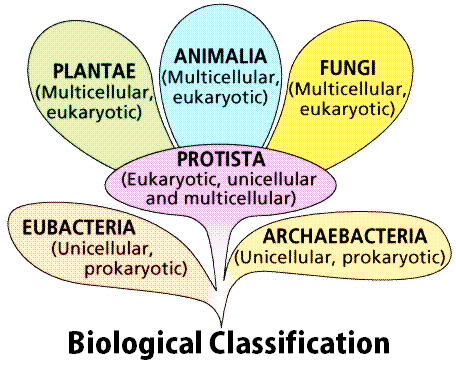
Fig.1. Five Kingdom Classification
Kingdom Monera
The most important members of Monera are Bacteria. All organisms present in this kingdom are prokaryotes. It includes bacteria as well as blue-green algae. They can be present in extreme habitats such as hot springs, deserts, snow as well as deep oceans. Certain organisms acts as parasites also..
Characteristics of Monera
- All of them are prokaryotes.
- Most primitive organisms.
- Nucleus is not bound by a nuclear membrane.
- Cell wall is present.
- DNA is suspended in the cytoplasm known as nucleoid.
- They can be autotrophs, heterotrophs, and parasites. They can live in symbiotic relationship and commensalism.
- Respiration can be aerobic as well as anaerobic.
- Movement is through flagella.
- Circulation of nutrients, gases occurs via diffusion.
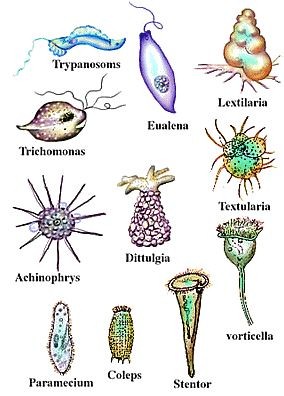
Fig.2. Examples of Kingdom Monera
They are divided into Archaebacteria and Eubacteria.
Archaebacteria
They can be halophiles (survive in high salt concentration), thermoacidophiles (hot springs), and methanogens (marshy areas). The structure of their cell wall is different from that of other members of Monera. Methanogens are found in the gut of some ruminants such as buffaloes and cows. They also help in the production of biogas from the dung of the animals.
Eubacteria
They are referred as “True bacteria”. They are characterized by the presence of motile flagellum and a rigid cell wall. It includes cyanobacteria (blue-green algae). It is similar to plants in having chlorophyll a. So, known as photosynthetic autotrophs.
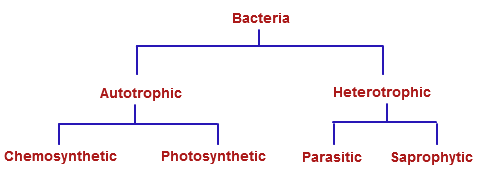
Fig.3. Classification based on mode of nutrition
Cyanobacteria are unicellular, filamentous algae. They form colonies which are surrounded by gelatinous sheath. Some are specialized in fixing the nitrogen using a specialized structure known as heterocyst. For example, Nostoc.
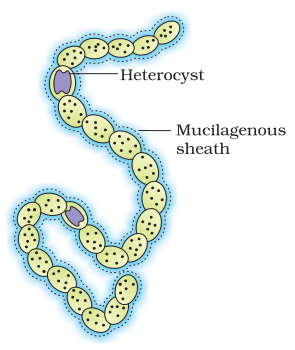
Fig.4. Nostoc
There are certain bacteria that can oxidize certain inorganic substances such as nitrites, nitrates, they are known as chemosynthetic autotrophs. The energy released during oxidation is used in the production of the ATP.
Another group of bacteria known as heterotrophic bacteria are abundant in nature. They are present in curd, in production of antibiotics, fixing nitrogen in the roots of the leguminous plants.
Bacteria reproduce by fission and under unfavorable conditions they reproduce by spores. Monera also includes Mycoplasma. They completely lack cell wall and survive in anaerobic conditions. Mycoplasma are the smallest living organisms known.
Kingdom Protista
Single celled eukaryotes are kept under Protista. Mostly are aquatic in nature. For example, Algae serves as primary producers in aquatic ecosystem.
Characteristics of Protista
- They are unicellular, eukaryotic organisms.
- They have membrane bound organelles as well as membrane bound nucleus.
- They move by cilia and flagella.
- Respiration is aerobic as well as anaerobic.
- Reproduction is sexual as well as asexual.
- They form cyst
It is divided into Chrysophytes, Dinoflagellates, Euglenoids, Slime moulds and Protozoans.
- Chrysophytes
It includes diatoms and golden algae. Their habitat can be freshwater water as well as marine. Mostly they are photosynthetic. Their cell wall is impregnated with silica. They are the major producers in the oceans. Most of them are unicellular, flagellates. But some are amoeboid.
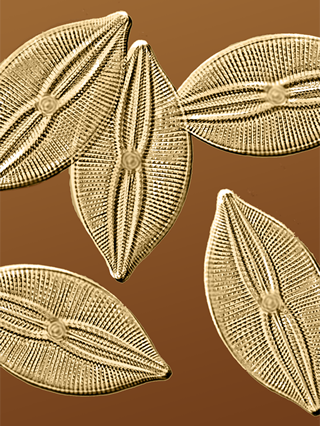
Fig.5. Diatoms
- Dinoflagellates
They are marine and photosynthetic organisms. They can be yellow, brown, red, or blue in color. The color is due to the presence of different pigments on the cells of the dinoflagellates. The cell wall is impregnated with cellulose walls. They usually have two flagella one is placed longitudinally and other transversely. For example, Gonyaulax catenella, Noctiluca scintillans.
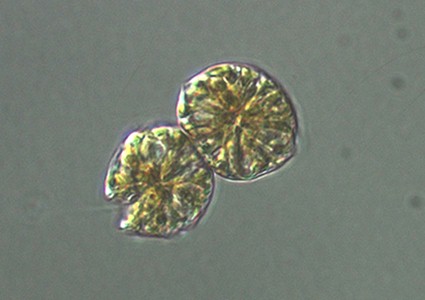
Fig.6. Gonyaulax catenella
- Euglenoids
They are freshwater organisms present in stagnant water. They have a protein rich layer known as pellicle. They have one long and one short flagella. They can be autotrophic in presence of sunlight as well as heterotrophic in absence of sunlight. For example, Euglena.
Most of the euglenoids possess chloroplast so they can synthesize their own food. The reserve food material found is Paramylon (carbohydrate).
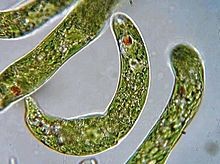
Fig.7. Euglena
- Slime moulds
They are saprophytic in nature. Under favorable conditions, they form aggregates known as Plasmodium. During unfavorable condition, they form fruiting bodies with spores. They have true cell walls. They are extremely resistant to adverse conditions.
- Protozoan like protists
They are heterotrophs. They can live as parasites or as predators. There are four major types of protozoans found-
- Amoeboid protozoans live in fresh water, moist soil, or sea water. They possess pseudopodia for engulfing the food particles, such as Amoeba.
- Flagellated protozoans can be free-living or parasitic. Members of this group are responsible for different parasitic diseases. For example, Trypanosoma causes sleeping sickness.
- Ciliated protozoans possess thousands of cilia. The movement of cilia helps in propelling forward or backward. It also helps in obtaining food from the outside. For example, Paramecium.
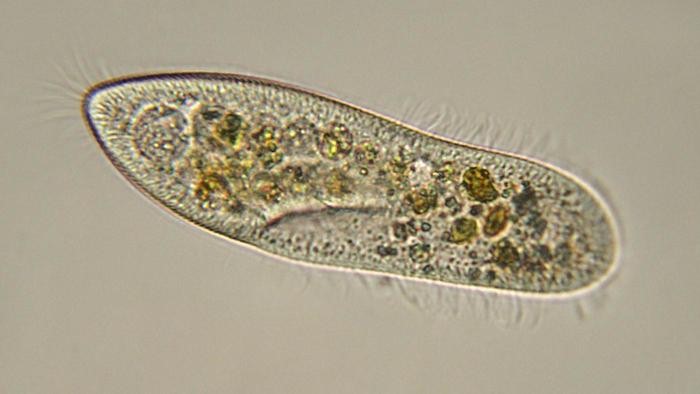
Fig.8. Paramecium
- Sporozoans form reproductive cells known as spores. They are parasitic and pathogenic in nature. For example, Plasmodium species causes Malaria. The reproduction can be sexual as well as asexual.
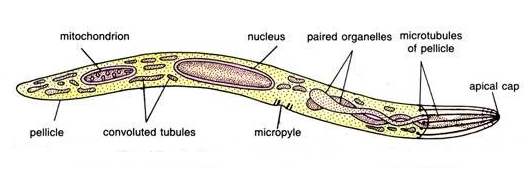
Fig.9. Plasmodium species
Kingdom Fungi
They are heterotrophic organisms. Some acts on dead organic matter and hence are known as saprophytes. Some acts on living organisms known as parasites. They can live in mutual relationship with each other. Such fungi are known as symbionts. For example, Lichens. Lichens are symbiotic association between the fungi and the roots of the higher plants.
Reproduction in fungi occurs by- budding, fragmentation, and fission. Asexual reproduction occurs by means of spores known as conidia, zoospores or sporangiospores.
Sexual reproduction occurs by oospores, ascospores and basidiospores. There are three steps of sexual cycle in fungi-
- Fusion of the protoplasm is known as plasmogamy.
- Fusion of nuclei is known as karyogamy. This results in the formation of the zygote.
- Meiosis of zygote results in the formation of the spores.
The vegetative part of the fungus is known as mycelium. It is composed of network of hyphae. During sexual cycle of fungi, two haploid hyphae fuses to form diploid cells. Kingdom fungi is divided into different classes-
- Phycomycetes (lower fungi) such as Mucor, Rhizopus, Albugo. Asexual reproduction occurs by motile zoospores and non-motile aplanospores. Spores are produced in sporangium. Fusion of gametes form zygospore. Mycelium is coenocytic (multiple nucleus) and multicellular.
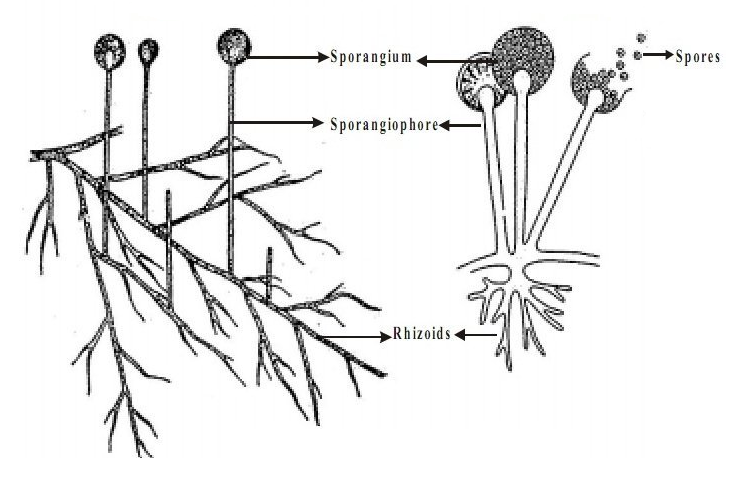
Fig.10. Mucor and Rhizopus respectively
- Ascomycetes (sac fungi) such as Penicillium, Aspergillus, Claviceps etc. They can be saprophytic, decomposers as well as parasitic. Asexual reproduction occurs by conidia. Sexual reproduction occurs by ascospores. Branched and septate mycelium is found in Ascomycetes.

Fig.11. Ascomycetes
- Basidiomycetes (club fungi) such as Agaricus (mushrooms), Ustilago (smut) etc. Vegetative reproduction occurs by fragmentation. No sex organs are found but plasmogamy occurs between two vegetative or somatic cells. The resultant structure is known as basidium. Basidium undergo karyogamy and meiosis to form four basidiospores.
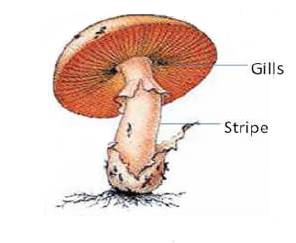
Fig.12. Agaricus
- Deuteromycetes commonly known as imperfect fungi as they lack sexual reproduction. The asexual reproduction occurs by conidia. Mycelium is septate and branched. For example, Alternaria, Trichoderma etc.
- Zygomycetes (conjugation fungi) are primitive group of fungi. Asexual reproduction occurs by non-motile sporangiospores. For example, Rhizopus.
Kingdom Plantae
It includes all photosynthetic, multicellular, eukaryotic plants. Characteristics of members of Plantae are as follows-
- Mostly they are eukaryotic in nature.
- The main pigment present is chlorophyll.
- Their cell wall is made up of cellulose.
- Photosynthesis serves as source of energy.
- Reproduction can be sexual as well as asexual.
- They exhibit the phenomenon of alternation of generation, that is, diploid sporophyte and haploid gametophyte.
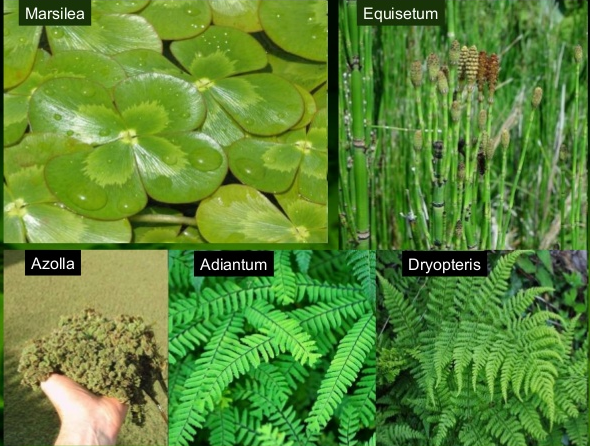
Fig.13. Examples of members of Plantae
Kingdom Animalia
They are heterotrophic, eukaryotic organisms. Some of the characteristics of members of Animalia are as follows-
- They are multicellular organisms with variable size.
- They are bilaterally symmetrical.
- They have well developed organ system such as skeleton system, circulatory system, respiratory system etc.
- They have well developed locomotory organs.
- Membrane bound cell organelles with nucleus bounded by a nuclear membrane.
- Respiration occurs by gills, book lungs, book gills, skin, lungs etc.
- Circulation occurs via blood, blood vessels, and heart.
- Kidneys are the main respiratory organs.
- Reproduction occurs by the formation of the haploid gametes. The fusion of gametes give rise to a new diploid organism.
Viruses, Viroids and Lichens
Viruses are infectious agents that are active only inside the host organism. They can infect bacteria, plants, animals etc. Viruses that infect bacteria are known as Bacteriophages. The genetic material in viruses can be DNA or RNA.
Viroids are small infectious agents that contains single stranded RNA. The main difference between the viruses and viroids is that viroids are extremely small in size as compared to viruses.
Lichens are symbionts between algae and fungi. Algae synthesizes food which provides nourishment to fungi and in turn fungi provides shelter to algae.